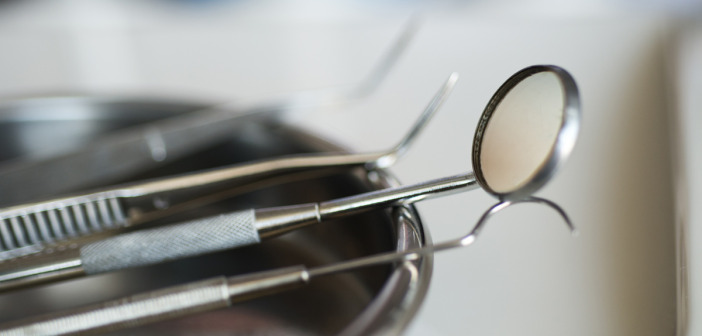Throughout history tooth decay has been a constant problem for people, while the methods for dealing with it have varied greatly. During the eighteenth century, barbers also acted as surgeons and dentists. Their procedures were usually painful, often unsuccessful, and nearly always bloody. The telltale red and white barber pole was inspired by the bloody rags they used to hang outside their business establishments. As an advertisement of their services, barbers would often string rows of rotten teeth they had extracted outside of their places of business. Several dental tools were developed throughout the 1700s and 1800s to assist in tooth extraction, but many of them appeared to be more like medieval torture devices than modern medical instruments. In the past dental work was often dangerous and extremely unhygienic. The wealthy that had to have teeth extracted often opted to have donor teeth (from both live and dead donors) implanted into the empty sockets for aesthetic reasons. Unfortunately, many nasty diseases and infections were spread through this practice. Needless to say, a visit to the barber was not for the faint of heart.
At the end of the nineteenth century, dentistry became a licensed profession. Much has improved over the last 100 years, and methods are constantly evolving to make dental procedures more comfortable and less intimidating, however visiting the dentist is still something that many dread and avoid at nearly any cost. Although still not a pleasant experience for most, a visit to the dentist is no longer something that should be feared. Modern dental practices have come a long way since bloody rags and no pain medicine.
With improved dental hygiene, the need for tooth extraction has lessened overtime, however there is still cause to have teeth removed. Although, ideally permanent teeth would last a lifetime, this is not always the case. The most common cause for tooth extraction is still because a tooth has been severely damaged due to trauma or is too decayed to be repaired. Other reasons for extraction include an infection of the tooth, gum, or bone around the tooth or an overly crowded mouth. Luckily, if someone is unfortunate enough to need a tooth extraction today, they no longer need to visit the local barber. Licensed dentists and oral surgeons perform extractions in a sterile and safe environment.
One of the first things you can expect when arriving at the dentist office for a tooth extraction is the administration of some type of anesthesia to minimize or eliminate the pain of the procedure. Local anesthesia is administered through several small injections near the tooth that needs work. Sedation anesthesia is administered through an intravenous line along with local anesthesia. Often sedation anesthesia is offered if a patient is especially anxious about the procedure. In the event of a more complex or longer dental extraction, general anesthesia may be used. In this case consciousness is lost and no pain is felt at all.
Tooth extractions are often classified as either simple or surgical. Simple extractions are typically performed on teeth that are visible and relatively easily accessed. Surgical extractions are usually performed under general anesthesia and involve at least one incision. In both cases, forceps are often used to remove the tooth and steady pressure is applied to alleviate some of the bleeding.
Post extraction recovery is much easier than in the past and the risk of infection and dangerous side effects have been largely eliminated due to a variety of practices. If the risk of infection is high, antibiotics may be prescribed to eliminate this risk. According to Lighthouse Family Dentistry, the most common complication post extraction is oozing or bleeding. We talked with them about this subject and they said, “This can be alleviated by biting with significant pressure on a piece of gauze immediately after the procedure until a blood clot has a chance to form in the socket. This usually stems any further bleeding problems, but sometimes there is still intermittent bleeding for about 24 hours. After this point, bleeding is much less common.”
Although, modern dentistry is not perfect, the procedures have become vastly safer, more hygienic, and less painful than they were in the past. Don’t hesitate to talk with your dentist or surgical team about your fears and expectations before any dental procedure. They will help prepare you for as pain free experience and easy recovery as possible.




